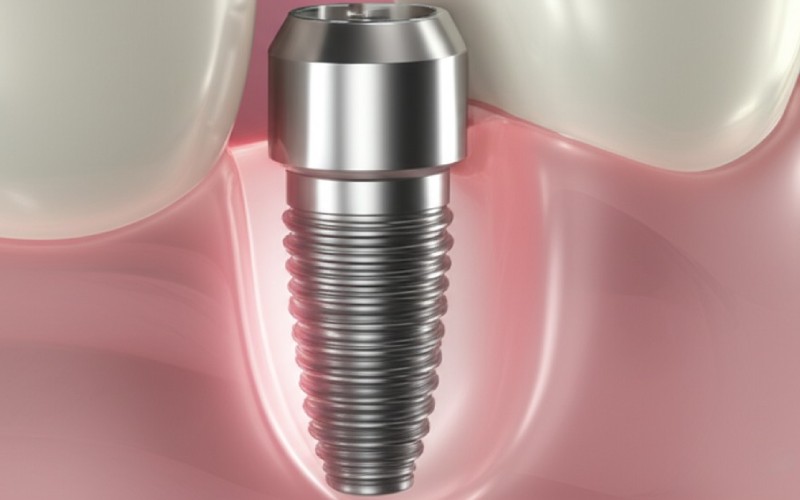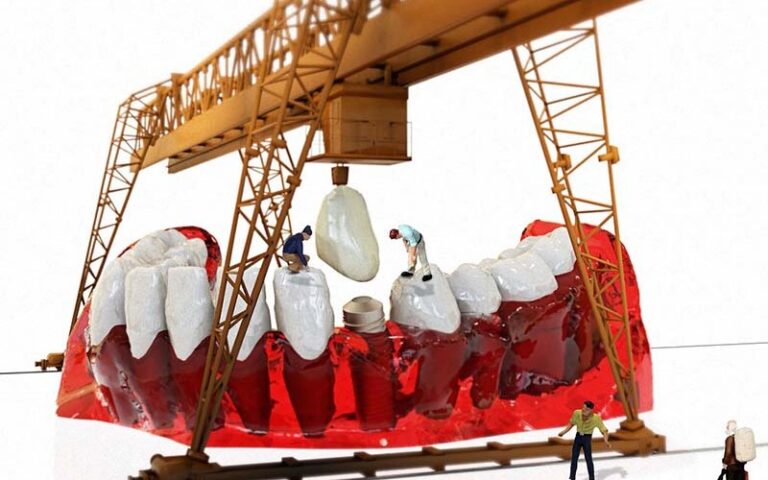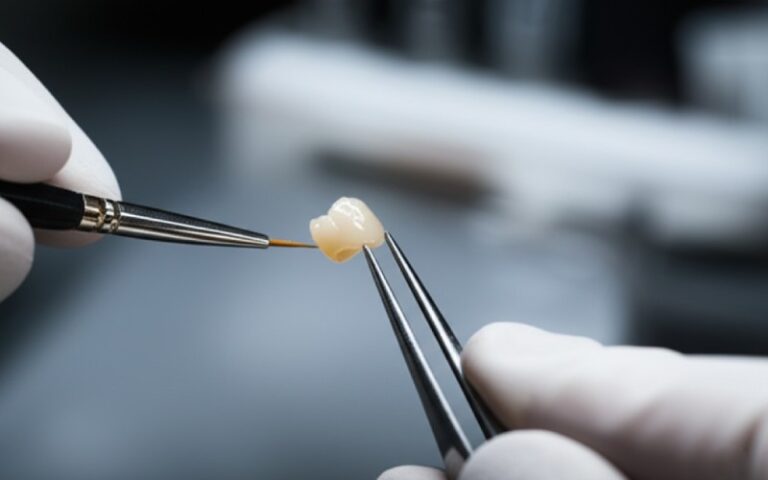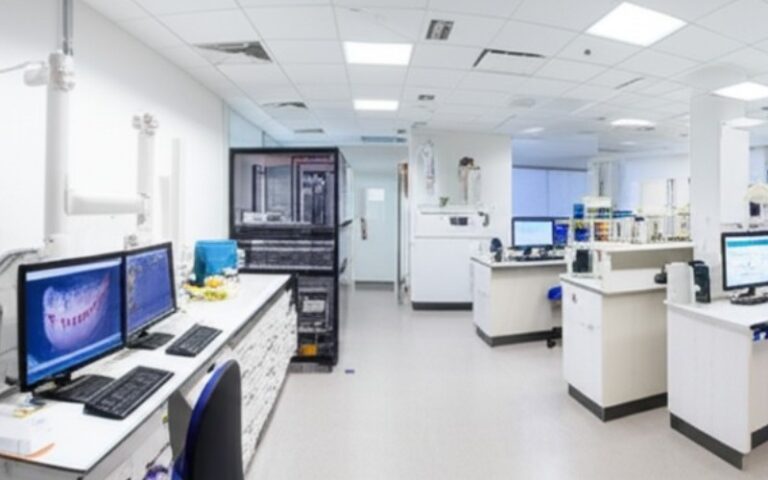
Healing Abutment vs. Cover Screw: Forståelse af den centrale forskel i din tandimplantatrejse
“Healing abutment” and “cover screw.” they sound small and technical, but I learned they play a huge role. This article is for you if you’re in the same boat. We will explore the healing abutment vs cover screw choice. You will learn what they are, why your dentist chooses one over the other, and how they help your gum heal. Understanding these little parts will make you feel much more confident about your Tandimplantat proces.
Indholdsfortegnelse
What Is a Dental Implant in the First Place?
Before we talk about smaller parts, let’s start with the main event: the dental implant itself. You may think it is the whole fake tooth, but it’s not. A dental implant is really just a small, special screw. It acts like a new root for a tooth. Your dentist or a specialist will perform an implant surgery where this titanium post is surgically placed directly into your jawbone.
This little screw is the foundation for everything that comes next. The real magic of modern dentistry is a process called osseointegration. It’s a fancy word, but it just means that your own bone grows around and fuses to the dental implant. I found it amazing that my body could accept this titanium part and make it super strong. The long-term stability of the implant depends completely on this amazing healing process.
So, What Exactly Is a Healing Abutment?
Now let’s get to our first key player. A healing abutment is one of the most common implant parts you might see. When you first got one, you may feel a small, smooth metal button on your gum line. That’s the healing abutment. It is a small cap that your dentist screws onto the top of the implant after it has been placed. Its main job is to help the gum tissue heal properly.
A healing abutment is a temporary piece. It’s not going to be there forever. Its purpose is to guide your gum to heal in a perfect circle around the implant. This creates a natural-looking collar for your final tooth. My dentist told me to think of the healing abutment as a guide that prepares the site for the artificial tooth. This makes the healing abutment a very important part of the implant process. This healing cap is crucial for a good final look.

How is a Healing Abutment Placed on Top of the Implant?
The process is pretty simple. In many cases, after the dental implant is placed into the jawbone, the dentist can place the healing abutment right away. This is called a one-stage surgery. The abutment is placed by screwing it carefully into the implant. This single procedure means you won’t need a second surgery later to expose the implant.
The goal of the healing abutment is to shape the gum tissue around the spot where your new tooth will be. The healing abutment does this perfectly. You may have it for a few weeks or up to a few months. During this time, your gum tissue heals neatly around it. The healing abutment also protects the inside of the implant from food and bacteria. It is one of the most important implant parts. When the healing abutment is placed, the final step of the dental implant process is much closer.
And What is a Cover Screw?
Now for the second player: the cover screw. A cover screw is very different from a healing abutment. It’s a tiny, flat-topped small screw. It is one of the other important implant parts. When a dentist uses a cover screw, it is inserted into the implant to seal it off. It sits completely level with the top of the dental implant. It does not stick out above the gum.
After your dentist places the cover screw, he or she will stitch the gum tissue completely over the top of it. This means the dental implant is totally buried and hidden under your gum. This protects the implant from any pressure while your bone is healing. Cover screws are transitional dental components that play a silent but very important role in the healing process. My dentist explained that screws are transitional dental implant parts that ensure a safe healing environment.
Why Would My Dentist Choose a Cover Screw Instead of a Healing Abutment?
This was a big question for me. Why hide the implant? A dentist will place a cover screw when the dental implant needs the best possible environment to heal. This is often called a two-stage surgery. Your dentist might choose this path if your bone was a little soft or if you needed a bone graft at the time of implant placement. The goal is to let the osseointegration happen without any disturbance at all.
Using a cover screw or a healing abutment is a decision your dentist makes for your health. The gum is closed over the cover screw to fully protect the site. This also helps keep bacteria from entering the area around the implant. After a few months, once the tissue has healed and the implant is solid, you’ll have a second, very small procedure. The dentist uncovers the implant, the cover screw is removed, and then a healing abutment is put on. This starts the next part of the healing process.
What are the Key Differences Between a Healing Abutment and a Cover Screw?
So, let’s break down the key differences. The main difference between healing abutment and cover screw comes down to their shape, placement, and purpose.
- A healing abutment is taller. It is placed on top of the implant and sticks out through the gum. Its job is to shape the gum tissue. It usually involves one surgery.
- A cover screw is flat. It is placed on the implant, which is then covered by the gum. Its job is to protect the implant during the healing process. It usually involves two surgeries.
The choice between a healing abutment and a cover screw really depends on your specific situation. A healing abutment is great for shaping the gum right away and can save you a surgical step. A cover screw offers the highest level of protection for the implant as it fuses with your bone. Both the healing abutment and a cover screw are vital tools in dentistry. They just serve different purposes.
How Do These Implant Parts Affect the Gum Tissue Around the Implant?
The way these parts handle the gum tissue around the implant is very important. A healing abutment is specifically made to shape the soft tissue. It creates a beautiful gum contour that looks very natural. This is a big deal for how your final tooth will look, especially for front teeth. The healing abututment makes the final implant crown look like it is growing right out of your gum.
A cover screw, on the other hand, lets the gum tissue just heal flat over the implant. This is fine, but it means the gum will need to be shaped later. When the cover screw is removed and a healing abutment is placed, that is when the gum-shaping begins. It might take one to two weeks for the gum to form a nice collar around the healing abutment. So, both parts manage the soft tissue, just at different times.

What Are Healing Abutments and Cover Screws Made Of?
These parts are made from very safe materials. Most implant parts, including the healing abutment and cover screw, are typically made of titanium or a titanium alloy. Titanium is an amazing metal because our bodies don’t reject it. It is one of the best biocompatible materials used in medicine and dentistry.
Healing abutments come in different shapes and sizes to match your tooth. Sometimes, a healing abutment can be made from titanium or zirconia for a better look. Cover screws are typically made from strong titanium. The material has to be strong enough to do its job and safe for your body. Cover screws come in different sizes as well, to make sure there is a tight fit on the implant. Healing abutments come in different shapes to create the best gum line.
Understanding the Difference: What Happens After the Healing Phase?
So what comes next? Once your gum tissue has healed around the healing abutment for about two to three months, the next step is crown placement. At this point, the healing abutment is removed. It has done its job of shaping the gum. Your dentist will then place the final abutment. This is the part that connects your dental implant to your new crown.
The abutment is removed and replaced with the final one, which is secured with a screw. An impression is taken, and your beautiful final crown is made in a laboratorium. Soon, the crown is placed, and your smile is complete with a new artificial tooth. If a cover screw was used, there is just one extra step. The cover screw is removed, a healing abutment is placed for a short time, and then the process for the final restoration begins. The difference between these two methods is just a matter of timing.
Why is Understanding the Dental Implant Process So Important for a Patient?
For me, understanding the difference between a healing abutment and a cover screw was empowering. I wasn’t just a passenger on this journey; I was a partner with my dentist. I knew what was happening in my mouth and why. This knowledge removes a lot of the fear and anxiety that can come with any implant surgery. It helps you work with your dentist to get the best possible result.
Knowing about the two components, like the healing abutment and a cover screw, shows you how careful and precise modern dentistry is. Every little piece, from the initial implant placement in your bone and gum to the final abutment, has a very specific job. When you understand the ‘why’ behind each step, the whole experience feels less like a scary medical procedure and more like a planned project to restore your smile. I even looked up information from places like Cooley Smiles and WEO Media to learn more. Knowledge is power, especially when it comes to your health.
Vigtige ting at huske
- A dental implant is a titanium screw that acts as a new tooth root in your jawbone.
- A healing abutment is a temporary cap that is placed immediately on the implant. It sticks out above the gum and shapes the gum tissue.
- A cover screw is a small, flat screw that seals the implant. The gum is closed over it to protect the implant while it heals.
- Your dentist will choose a healing abutment (one-stage surgery) or a cover screw (two-stage surgery) based on your healing needs.
- Both a healing abutment and cover screw are typically made of body-safe titanium and are removed before your final crown is placed.
- Understanding these parts helps you feel more in control and confident during your dental implant treatment.




